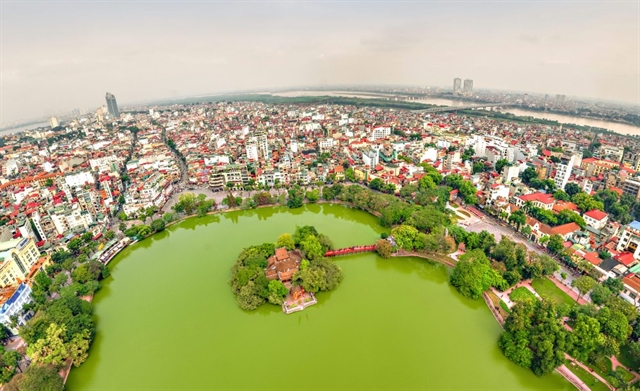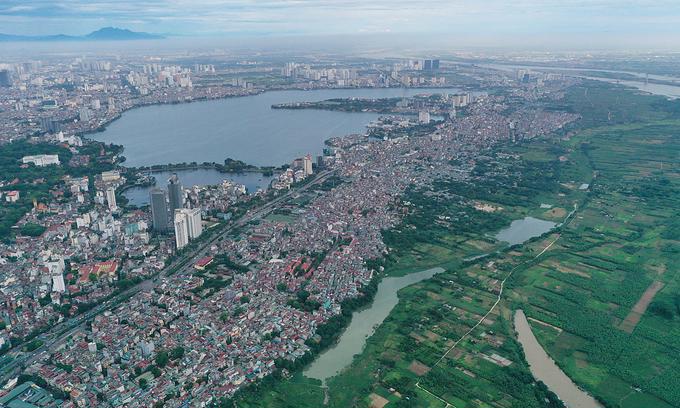For centuries the Red River Delta has been northern Vietnam's agricultural breadbasket, its fertile fields feeding generations of farming communities. Now the region is being reimagined as the country's next industrial and services juggernaut.
On May 4th, Prime Minister Pham Minh Chinh signed off on an ambitious vision to engineer just such an economic transformation by 2050.
Remaking the Delta
The newly approved "Planning of the Red River Delta for 2021-2030, vision to 2050" outlines a sweeping overhaul for the region over the next quarter century.
At its core is a bid to dramatically accelerate growth while shifting the economic base from agriculture to higher-productivity industries and services.
The numeric targets are eye-popping. Over the current decade the plan foresees the delta's gross regional product (GRDP) expanding by a torrid 9-9.5% annually on average. That is nearly triple last year's 3.3% national GDP growth rate. By 2030 the aim is for GRDP per capita to vault to $11,000-12,000.
To underpin this scale of growth, the plan projects services swelling to 41% of GRDP by 2030, with industry at 47% and agriculture dwindling to 3.5%. The digital economy alone is envisioned contributing over a third of output. Other goals include boosting labour productivity growth above 7% yearly, lifting the urbanization rate past 55%, and ensuring over half the workforce is skilled.
A Green Industrial Revolution
Such frenetic industrialization raises fears of severe environmental damage in a region already reeling from urban air pollution, water degradation and biodiversity loss.
But the planners insist development must occur in eco-friendly fashion. Their mantra is building a "modern, civilized, ecological" region at the cutting-edge of technology and sustainability.
This "green" vision foresees the delta evolving into a national leader in science, technology, innovation and digitalization. Modernizing the industrial base is a key priority, with high-tech sectors like semiconductors, AI and robotics to be actively nurtured. Building new eco-friendly infrastructure like urban rail networks is likewise deemed essential.
The broader ambition is to forge a dynamic new economic engine to lift the entire nation's growth model. "The Red River Delta is envisaged as a major economic and financial center of regional and world significance," the plan declares. It would serve as an industrial counterweight to the mighty service-sector hub around Ho Chi Minh City in the south.

New Regional Clusters
To realize these lofty goals, the delta is to be reorganized into distinct northern and southern sub-regions. The former encompasses existing powerhouses like the capital Hanoi and the industrial zones of Haiphong and Quang Ninh province.
This northern arc will spearhead development of high-value manufacturing hubs in fields like semiconductors and robotics, while expanding services like tourism, finance and logistics.
In contrast, the southern sub-region spanning Thai Binh, Nam Dinh, Ha Nam and Ninh Binh is geared towards coastal economic zones, food processing, renewable energy and eco-tourism capitalizing on its natural assets.
Four urban areas - Hanoi, Bac Ninh, Quang Ninh and Haiphong - are designated as primary "growth poles". Their development is to be turbocharged by five major new transportation arteries, including two international corridors and three inter-regional ones, with expanded airports, seaports and railways expediting domestic and global connectivity.
The capital Hanoi is envisioned becoming a true global city "on par with leading Asian metropolises". It would host national innovation centers, world-class universities and top healthcare facilities driving the whole delta's modernization.
Implementation Obstacles
This sweeping blueprint has stoked a mix of excitement and skepticism over its feasibility. Developing the skilled workforce, technology base and green industrial value-chains required seems a gargantuan task.
Executing scores of new infrastructure mega-projects across multiple provinces is also an immense coordination challenge potentially hampered by red tape.
Moreover, bankrolling this grand vision may prove financially onerous for the state. Achieving all the socio-economic goas may become difficult if growth stagnates or foreign investment fails to accelerate swiftly, depriving the delta of funds and its locational strengths like proximity to China.
Planning urban clusters like a globally-oriented Hanoi is also tougher in practice than theory. The capital already suffers crippling congestion, pollution and overburdened public services that may scupper grand ambitions absent holistic solutions.
While the plan ambitiously targets high-tech manufacturing and innovation hubs, the delta currently lacks the required ecosystem. Universities, research labs and private sector dynamism all need rapid upgrading and reforms to enable this transition from an agricultural base.
Skeptics also see replicating the rapid industrialization of coastal China or Asian tigers as almost implausible for an agricultural region with shortfalls in hard and soft infrastructure.
Ultimately, the remaking of the Red River Delta rests not just on new economic master plans, but on accelerating intricate policy reforms and developing ground-up dynamism. A grand vision has been laid out, but the path to realizing it promises to be arduous.
The delta's economic destiny now hinges on the quality of its pragmatic execution over the decades ahead.









 Google translate
Google translate